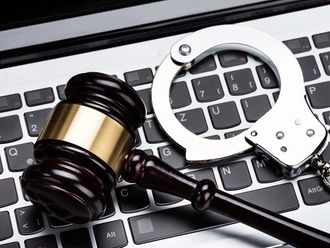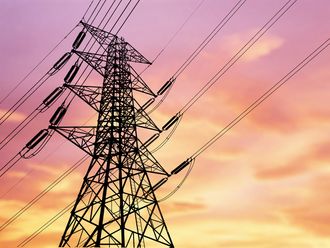
The news of three cables being severed under the Red Sea, disrupting global internet and telecommunications, has sparked concern.
There are worries that the cables may have been targeted in the Houthi campaign, which the rebels claim is aimed at pressuring Israel to halt its conflict with Hamas in the Gaza Strip. However, the Houthis have denied any involvement in the attacks on the cables.
According to HGC Global Communications, the severed lines affect 25 per cent of the traffic flowing through the Red Sea, especially data moving from Asia to Europe. Should we be worried, now that the Red Sea is a battleground? Here’s an explainer that cuts through the chatter.
Why are subsea cables so crucial?
Remember how Covid-19 was all about social distancing? Yet, ironically, it brought the world closer than ever before. We had zoom parties with relatives and friends abroad, training sessions on teams, made financial transactions, and, oh yes, we sat in Dubai and watched a BTS concert in South Korea.
And all this was possible due to a network of subsea cables, criss-crossing across the deep, dank ocean floor. Within these cables are strands of glass fibre, as thin as human hair, thousands of miles long, transmitting images and sounds at almost the speed of light.
How do these cables work?
Lasers move data down the glass fibres in the cables, using fibre-optic technology. Once it reaches land and connects to an existing network, the data we need to check emails or catch the latest web series makes its way to our devices — really, really fast.
In fact, Google, Facebook, Amazon and Microsoft owned or leased more than half of the undersea bandwidth in 2018, according to internethealth.org. Currently, Google alone owns six active submarine cables, and plans to have eight more ready within two years.
How fast is fast?
According to the New York Times, “The data zips from New York to Sydney, from Hong Kong to London, in the time it takes you to read this word.”
$ 10 trillion
worth of financial transactions are transmitted via fibre-optic cables every day, according to a Financial Times report.The fastest of these networks is a transatlantic cable called Amitié — funded by Microsoft, Meta et al. It can carry 400 terabits of data per second. “That's 400,000 times faster than your home broadband if you're lucky enough to have high-end gigabit service,” CNET writes.
Contrast this with the first undersea cable laid in 1858 that connected England to the United States via telegraph. Queen Victoria wired her first congratulatory message to then US President James Buchanan. It reached him – in 17 hours!

The big picture
Satellite links may soon be the next big thing, but as of now, it’s the subsea cables that are the backbone of commerce and communications. They carry more than 99 per cent of traffic between continents and transmit financial transactions worth more than $10 trillion every day.
According to a McKinsey report, subsea cables bring in considerable economic advantages – faster internet speeds, lower prices, a 3-4 per cent boost in employment and a 5-7 per cent boost to economic activity.
1.4 million km
The total length of fibre-optic cablesThere’s also this: Tech giants like Meta, Microsoft, Amazon and Google are responsible for two-thirds of the world’s traffic, according to TeleGeography, an analyst firm that tracks the business. “And their data demands are increasing by around 50 per cent a year,” SubCom Chief Executive David Coughlan told CNET.
Given the scale, it’s no wonder that undersea cables are much sought after – for the money and for the power play.
Who controls these cables?
According to TeleGeography, as of June 2023, there were 485 in-service systems, with another 70 planned. These cables are mostly built and owned by consortiums of technology and state-owned telecoms companies. For example: SeaMeWe-5 (South East Asia–Middle East–Western Europe 5), which connects France and Singapore, is owned by more than a dozen companies, including China Mobile and Telecom Italia Sparkle.
Between France and Signapore, the 20,000-km cable system provides broadband communication to Malaysia, Indonesia, Thailand, Myanmar, Bangladesh, India, Sri Lanka, Pakistan, United Arab Emirates, Oman, Qatar, Djibuti, Yemen, Saudi Arabia, Egypt, Italy, and Turkey.
So, data crisscrosses countries?

Well, yes. Which means that there’s a high level of cooperation, even between adversarial nations – at least for now. For instance, a fault on a major intercontinental fibre cable owned by US carriers AT&T and Verizon et al, was repaired by Chinese engineers operating from a Chinese vessel.
Are these cables safe?
Despite the high tech involved, subsea cables per se are low tech. According to CNET, the pipes are about as thick as a garden hose, coated in tar and unspooled by ships using the same process used in the 1850s to lay the first transatlantic telegraph cable. Yes, we haven’t moved much in this department.
In a nutshell, these cables are about as secure as a garden hose and any damage to these cables can cause unimaginable havoc. After all, what does it take to slash a garden hose?
Should we be worried?
The internet became a big thing as the world emerged from the Cold War, and the cable owners were a mish-mash of corporations from different countries.
It worked then, but things are changing. Subsea cables are increasingly being looked upon as the new Iron Curtain. While friendly countries will benefit from cables running through friendly waters, countries with cranky neighbours that are separated by economic zones or unfriendly waters are likely to get left behind in a world that is increasingly veering towards digitalisation.












